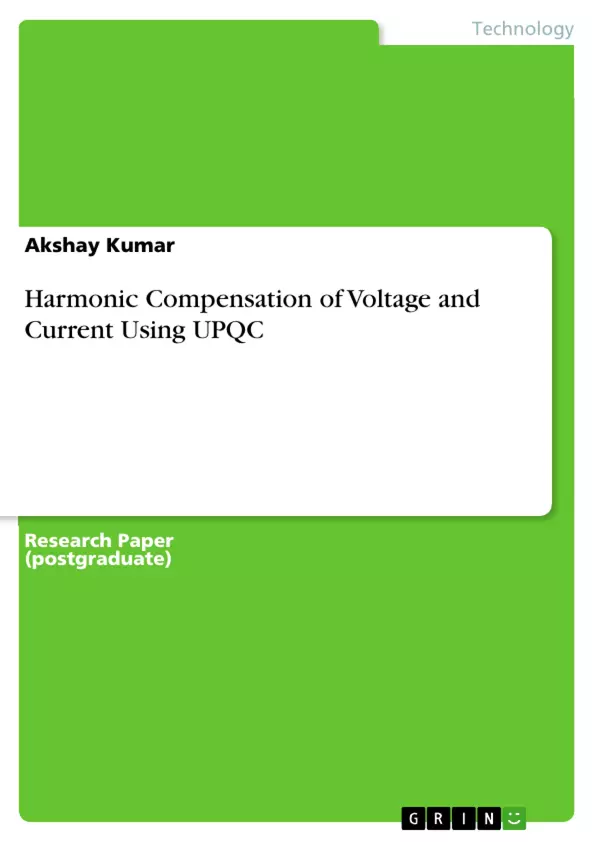In this paper a novel control method based on Synchronous Reference Frame Theory (SRFT) is proposed to compensate power quality problems through a three- phase Unified Power Quality Conditioner (UPQC) under unbalanced and distorted load conditions. The performance of the proposed system has been verified using MATLAB-SIMULINK and are discussed in detail in this paper.
Inhaltsverzeichnis (Table of Contents)
- I. INTRODUCTION
- II. UPQC
- III. SRF TECHNIQUE
- IV. UPQC CONTROL ALGORITHM
- A. Reference Voltage Signal Generation for Series APF
- B. Reference Current Signal Generation for Shunt APF
- V. SIMULATION RESULTS
- VI. CONCLUSION
Zielsetzung und Themenschwerpunkte (Objectives and Key Themes)
This paper aims to introduce a novel control method based on the Synchronous Reference Frame Theory (SRF) for the mitigation of power quality issues using a three-phase Unified Power Quality Conditioner (UPQC) under unbalanced and distorted load conditions. The effectiveness of this method is demonstrated using MATLAB-SIMULINK simulations.
- Power Quality Issues
- Unified Power Quality Conditioner (UPQC)
- Synchronous Reference Frame Theory (SRF)
- Harmonics Mitigation
- Voltage and Current Compensation
Zusammenfassung der Kapitel (Chapter Summaries)
The introduction highlights the growing concern of power quality issues due to the increased usage of non-linear loads and electronically switched devices in distribution systems. The paper proposes a novel control method based on the SRF for a three-phase UPQC to mitigate these problems.
Chapter II provides a detailed overview of the UPQC, describing its configuration, components, and functionalities. It emphasizes the ability of the series and shunt converters to address various power quality concerns.
Chapter III delves into the SRF technique, explaining how it can effectively extract harmonics from supply voltages or currents for compensation purposes. The chapter highlights the transformation of three-phase signals into stationary and synchronous frames.
Chapter IV elaborates on the proposed UPQC control algorithm. It explains the computation of reference switching signals for both the series and shunt active filters, based on the SRF approach. The chapter outlines the generation of reference voltage signals for the series active filter, emphasizing the importance of compensation for voltage distribution problems. It further describes the reference current signal generation for the shunt active filter, focusing on the mitigation of current harmonics and reactive power.
Chapter V presents simulation results obtained using MATLAB-SIMULINK, demonstrating the effectiveness of the proposed control strategy in mitigating the impact of unbalanced and non-linear load conditions. The chapter highlights the ability of the system to achieve unity power factor and effectively isolate loads from voltage sags.
Schlüsselwörter (Keywords)
The core focus of this paper lies in the development and evaluation of a novel control strategy for a Unified Power Quality Conditioner (UPQC) utilizing the Synchronous Reference Frame (SRF) theory. This approach aims to address critical power quality issues such as voltage and current harmonics, sags, swells, and imbalances, which are increasingly prevalent in distribution systems. The research utilizes MATLAB-SIMULINK for simulation and analysis, showcasing the effectiveness of the proposed system in mitigating these power quality problems.
- Citation du texte
- Akshay Kumar (Auteur), 2014, Harmonic Compensation of Voltage and Current Using UPQC, Munich, GRIN Verlag, https://www.grin.com/document/278319



